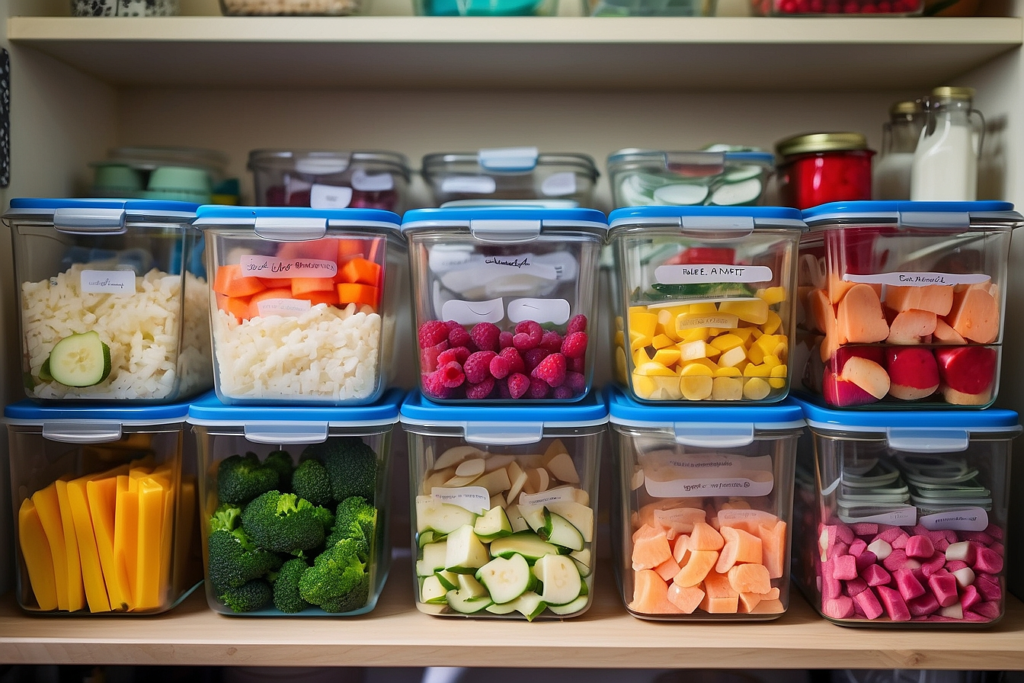Welcome to Your Zero-Waste Kitchen Adventure!
Imagine a kitchen where nothing goes to waste – where every scrap of food finds a purpose, and single-use plastics are a thing of the past. Sounds like a dream, right? Well, it’s easier than you might think! Let’s embark on a journey to transform your kitchen into an eco-friendly haven that’s good for both the planet and your wallet.
Why Go Zero-Waste?
Before we dive in, let’s talk about why this matters. Every year, tons of food and packaging end up in landfills, contributing to climate change and pollution. By going zero-waste, you’re not just helping the environment – you’re also saving money by buying less and using what you have more efficiently. It’s a win-win!

Getting Started: Easy Swaps
Let’s start with some simple swaps that’ll make a big difference:
1. Ditch the plastic wrap: Instead, use beeswax wraps or silicone lids to cover leftovers. They’re reusable and work just as well!
2. Say goodbye to paper towels: Cloth napkins and washable kitchen towels are your new best friends. They’ll save trees and your money in the long run.
3. Bring your own bags: Keep reusable produce bags and shopping totes handy for grocery trips. No more plastic bags piling up under the sink!
4. Glass is class: Store leftovers in glass containers instead of plastic. They last longer and won’t stain or absorb odors.
5. Bottle it up: Invest in a good water bottle and say farewell to disposable plastic bottles forever.
The Art of Meal Planning
One of the biggest culprits of kitchen waste is forgotten food that spoils before we can use it. Enter meal planning – your secret weapon against waste!
Start by taking inventory of what you already have. Plan your week’s meals around these ingredients, then make a shopping list for anything else you need. Stick to your list when shopping to avoid impulse buys that might go to waste.
Remember, it’s okay to start small. Maybe plan just three meals a week at first. As you get more comfortable, you can expand your planning. The key is to be realistic about what you’ll actually cook and eat.

Recipes That Reduce Waste
Now, let’s talk about some delicious ways to use up every bit of your food:
1. Veggie Stock From Scraps: Keep a bag in your freezer for vegetable trimmings – carrot tops, onion skins, celery leaves, etc. When it’s full, simmer the scraps in water for a flavorful homemade stock.
2. Banana Bread: Got overripe bananas? Don’t toss them! Mash them up for a classic banana bread. It’s perfect for breakfast or a snack.
3. Stir-Fry Surprise: Use up odds and ends of vegetables in a quick stir-fry. Toss with soy sauce and serve over rice for an easy dinner.
4. Smoothie Packs: Freeze fruits that are about to go bad in small bags. Add some spinach or kale for a nutrient boost. When you’re ready for a smoothie, just blend with your liquid of choice!
5. Crouton Magic: Transform stale bread into crunchy croutons. Cube the bread, toss with olive oil and herbs, then bake until crispy.
The Journey Continues
Remember, going zero-waste is a journey, not a destination. Don’t get discouraged if you can’t do everything at once. Every small step counts! Start with what feels manageable and gradually incorporate more zero-waste practices into your routine.
As you progress, you might find yourself looking at food and packaging in a whole new way. You’ll start seeing potential in things you used to throw away. That pickle jar? It’s your new storage container. Those lemon rinds? They’re tomorrow’s all-purpose cleaner.
Embrace the creative challenge of finding new uses for things. Share your successes (and even your failures) with friends and family. You might just inspire them to start their own zero-waste journey!
By making these changes, you’re not just transforming your kitchen – you’re part of a growing movement towards a more sustainable future. So roll up your sleeves, get creative, and enjoy your zero-waste adventure. Your wallet, your taste buds, and the planet will thank you!





















































